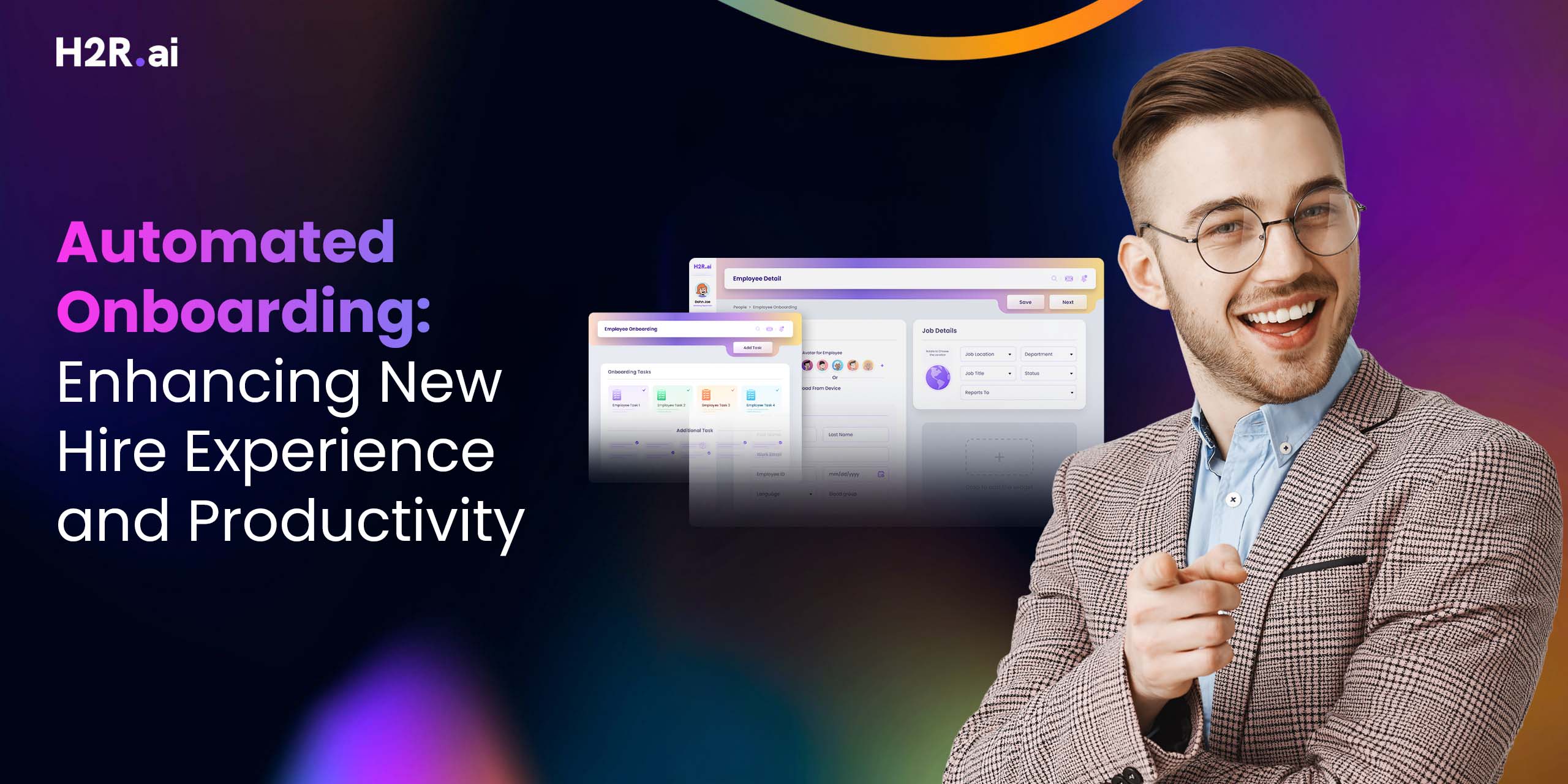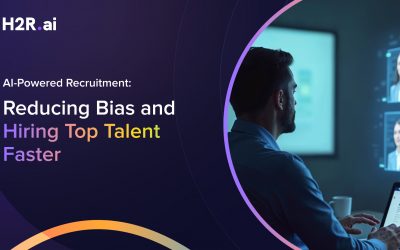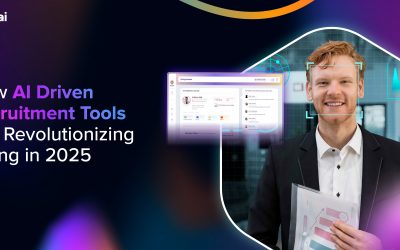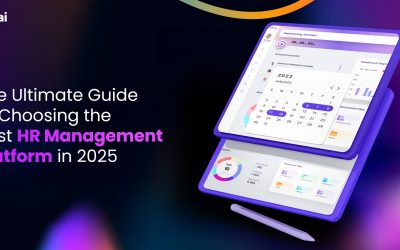In the digital age, new hires disengage fast, and that costs you more than time. That’s why high-growth companies are moving to employee onboarding automation. From streamlining offer letters, policing briefing, and provisional training, AI-powered HRMS systems empower new hires to stay longer and deliver faster.
And in this blog, we’ll explore what are the benefits of HR onboarding automation on new hire experience and business productivity.
What is Employee Onboarding Automation?
When AI-powered software, tools, or platforms are used to streamline, and personalize the process of integrating new hires into an organization, it’s called automated onboarding.
Under this, the entire onboarding procedure, from document signing to receiving and accessing the system gets digitized. The new hire receives the login details to the onboarding portal, and every required step is in front.
Unlike traditional onboarding, which requires back-and-forth emails, HR onboarding automation enable:
- Rule-based task automation based on role, department, or geography.
- Self-service portals to complete paperwork, and training.
- Real-time dashboards for visibility into onboarding progress.
- Integration with IT and payroll system without additional emails.
How HR Onboarding Automation Improved New Hire Experience?
The first few days of a new hire’s set the tone for engagement, productivity, and retention. And employee onboarding automation enhances this experience by removing delays, and friction from the entire process.
Here’s how HR onboarding automation transform this experience:
1: Instant Access and Clarity
Automated onboarding ensures every new hire receives welcome emails, preboarding access, and personalized task lists. It helps to eliminate the ambiguity and builds trust in the company at an early stage.
Additionally, it helps the new employee to efficiently understand the process, how to use the internal system, and access all necessary documents at their convenience. By this, the company takes the first step to improve employee experience (EX).
2: Reduced Manual Touchpoints
Nowadays, manuals mean delays and additional time, cost, and effort. Automated onboarding helps to eliminate all this, by digitizing signatures to policy acknowledgements. No more printing, scanning, or chasing people to rectify the details. It all happens with a click.
As a result, smooth compliance and quick onboarding, without any delay and inaccuracy.
3: Faster Integration with Teams
The new hires are introduced to their team only after completing the paperwork and mandatory pre-requisites. Automated role-based introductions and pre-schedules team meetups help new employees form early connections.
It helps to boost the feeling of belonging in a team and reduces first-week anxiety.
4: Personalized Onboarding Journeys
Nowadays, companies have different working models, such as on-site, hybrid, and remote. For all these roles, the policies and onboarding workflow varies. Automated onboarding platforms streamline the procedure by tailoring them per department, role, and location.
The HR executives have to select the details; rest all gets handled automatically while ensuring compliance.
5: Proactive Engagement
With nudges, automated reminders, and interactive check-ins, the system keeps new hires engaged without overwhelming them. It also helps them to easily navigate through every detail and start as a connected, contributing employee in days, instead of weeks.
Business Benefits of Automating Onboarding
Automating onboarding is more than a tech upgrade or a time and effort saving task. It’s a business transformation lever, that streamlines administrative tasks, ensures compliance, and boosts employee experience.
Here’s how employee onboarding automation improves business productivity:
1: Faster Time-to-Productivity
Manual onboarding delays system access, training schedule, and policy alignment. But, with automated onboarding new hires receive logins, device provisioning, and training material in a single streamlined workflow, sometimes even before their Day 1.
| Before Automation | After Automation |
|---|---|
| Multiple email threads | One-click access and automated alerts |
| Manual IT provisioning | Pre-scheduled system setup |
| Delayed orientation sessions | Pre-loaded digital learning paths |
2: Reduced HR and IT Workload
Typically, an HR executive spends 10-20 hours per new hire to help them go through documents, sign them, and execute internal handovers. Automation removes these touchpoints by creating a seamless workflow across departments.
It results in managing the entire 360-degree hiring procedure, from completing compliance signatures to raising IT tickets for system configuration. In addition, all this impact the following key areas:
- Less back-and-forth with managers and IT
- Elimination of duplicate data entry
- Automated reminders for form completion
3: Improved Compliance and Audit Readiness
Employee onboarding process numerous sensitive documents, such as legal forms, tax declaration, personal information, and internal training docs. Automation helps to ensure mandatory compliance checks are followed and auditable trails are created, records get timestamped and saved in version-controlled document libraries.
Moreover, automated compliance capabilities offer:
- Preconfigured templated for I-9, W-4, NDA and all other docs.
- Centralized e-signature logs.
- GDPR/HIPAA compliance flagging.
4: Lower Early Attrition Rates
Unclear processes, lack of support, and disjointed onboarding are the top reasons why new hires leave within the first 90 days. With employee onboarding automation, the entire process gets structured and intuitive, helping to build engagement and emotional connection at an early stage.
| Factor Influencing Early Turnover | Solution via Automation |
|---|---|
| Confusion about role/responsibilities | Role-based onboarding journeys |
| Lack of connection to team | Auto-triggered meet-and-greet invites |
| Missed check-ins | Scheduled onboarding surveys and feedback loops |
5: Real-Time Analytics & Process Optimization
Traditional onboarding offers limited visibility into the process. With automation, HR executives can track every process in real-time. In addition, it helps to assess the drop-off rates, task completion timelines, and satisfaction trends. And all this data helps the businesses to streamline their onboarding journeys accordingly.
Here’re the primary tasks a HR executive can track in real-time:
- Percentage of forms completed before or on Day 1.
- Median time to system access.
- Most frequent bottlenecks by role or region.
Streamline Onboarding, Improve Day-One Productivity—See H2R.ai in Action
Why Choose H2R.ai for Automated Onboarding?
H2R.ai is designed to transform onboarding from a manual checklist into a seamless, intelligent experience. It helps HR teams to scale efficiently, streamline paperwork, and improve new hire satisfaction, even before Day 1. In addition, precision, compliance, and ease comes built-in with H2R.ai, making it the first choice of HR professionals.
Key Highlights:
- Complete onboarding from any device, anywhere.
- Highly secure design, ensuring data integrity and confidentiality.
- Automated workflows with e-signature facility.
- Dashboards to track progress and onboard effectiveness.
Automate Onboarding, Elevate Experience
—Request Your Demo Today
Conclusion: A Faster Start Means Greater Retention
Employee onboarding automation doesn’t mean saving HR time and effort. It’s about making your new hire feel valued from day one. From personalized workflows to instant access, automation helps in reducing friction and improve employee experience.
Companies that streamline onboarding with platforms like H2R.ai not only accelerate time-to-productivity but also improve long-term retention.




